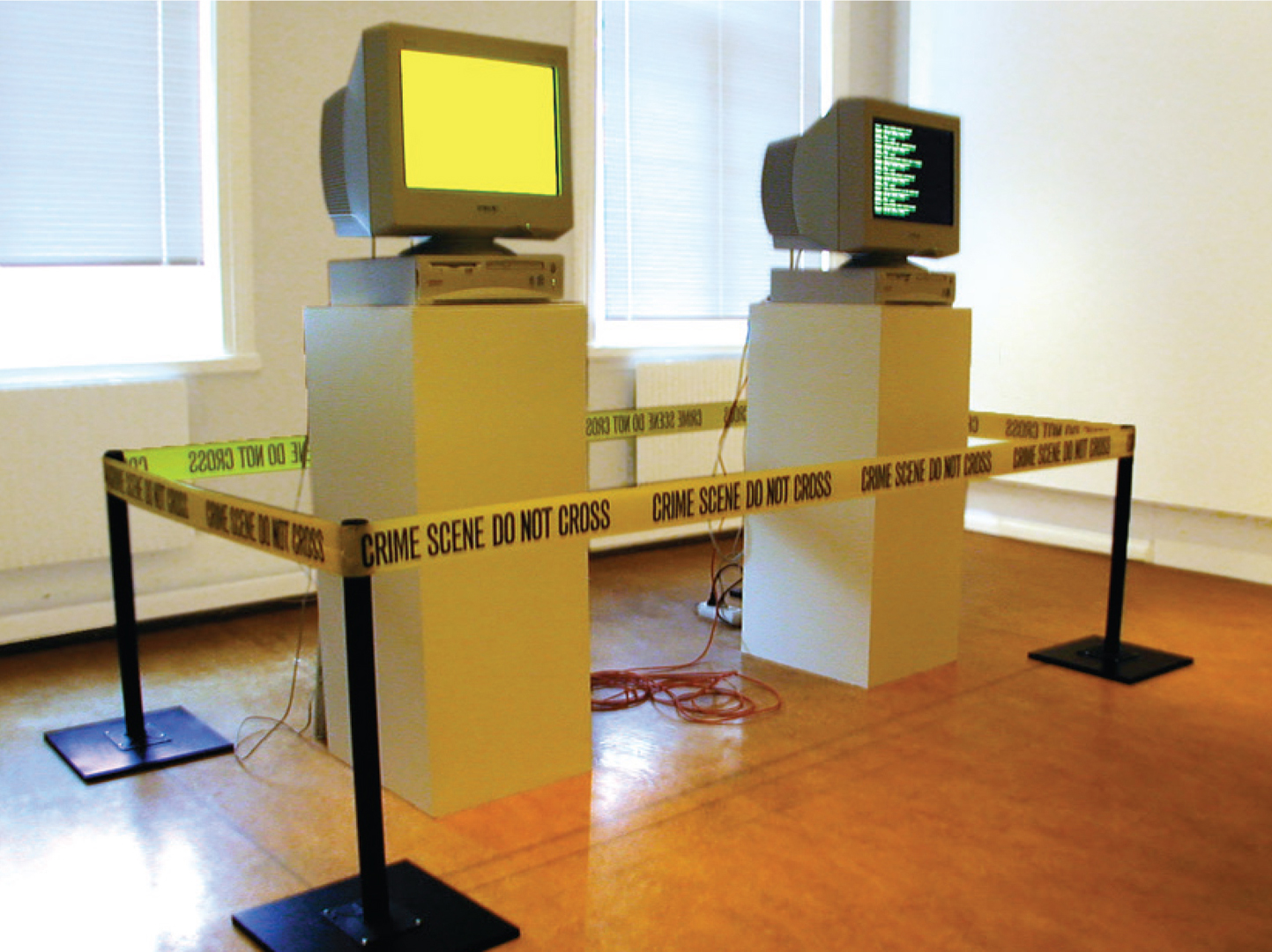Mogens Jacobsen: Crime Scene: Installation for Two Computers
Artist(s):
Title:
- Crime Scene: Installation for Two Computers
Exhibition:
Creation Year:
- 2003
Category:
Artist Statement:
The internet has enabled us to accomplish so many things. The universal appeal and power of the internet to change and augment our daily lives is both undeniable and inevitable. Every day we go online and consume endless amounts of media—audio, video, text, interactive experiences—that can be electrifyingly fun, educational, or a waste of time. Although a vast amount of information is available to us online, not all of it is free or legal to use without some sort of licensing agreement or pay-per-use model. Most of the bigger utility-like companies, such as Google, Yahoo, and Facebook, give away their online services for free; but when it comes to content created by professional companies, such as television studios, app creators, music or movie studios, there is a price that comes along with it. Despite this monetary inevitability, a great deal of data and information travel through the internet illegally, in violation of copyright and intellectual property laws.
As technology gains further ubiquity in popular culture, the rules and contexts that govern its use have begun to draw our attention. From lawsuits against Napster to federal hearings about Microsoft’s Internet Explorer, the problem of digital rights management is becoming a widespread phenomenon. Exploring the clash between mass consumption of technology and personal use, Danish artist Mogens Jacobsen’s work challenges the incorporeal existence of digital objects and their physical incarnations. Examining the legal restrictions of file-sharing, Crime Scene: Installation for Two Computers is an installation in which a copyrighted file is transferred between two computers ad infinitum. This portrayal of illegal internet activity in physical space adds yet another dimension to how mass culture is striving to amalgamate and restrict digital objects into categories that previously only existed for physical ones.





